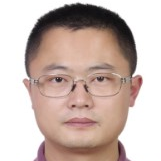Advancements in Deep-Sea Equipment and Technology, 3rd Edition
A special issue of Journal of Marine Science and Engineering (ISSN 2077-1312). This special issue belongs to the section "Ocean Engineering".
Deadline for manuscript submissions: 31 December 2025 | Viewed by 5494
Special Issue Editors
Interests: multidisciplinary design optimization and its application; deep-sea equipment development; manned/unmanned submersibles; lander/buoy development; manipulator/propeller/high-pressure seawater pump/underwater camera and other important components development; metal/organic glass/solid buoyancy material damage mechanism; strength and fatigue life prediction of structures
Special Issues, Collections and Topics in MDPI journals
Interests: autonomous underwater vehicle and multi-sensor fusion; fault diagnosis
Special Issues, Collections and Topics in MDPI journals
Interests: underwater equipment biomimetic technology; modern design theory and methods of marine equipment, submersibles; pressure-resistant structures; buckling
Special Issues, Collections and Topics in MDPI journals
Special Issue Information
Dear Colleagues,
The conflict between populations, resources and the environment in the twenty-first century has made the ocean a strategic space in which human society can achieve sustainable development. To study the ocean environment and exploit ocean resources, a fundamental understanding of complex and interwoven ocean processes across a broad range of spatial and temporal observational scales is required. This understanding is heavily reliant on the use of various research fleets and equipment that support increasingly complex, multidisciplinary, multi-investigator research projects, including those in support of autonomous technologies, ocean monitoring and observing systems, remote sensing and on-site sampling, and modeling. Various underwater submersibles are the main working forces for the research fleet. This is the third Special Issue of a continuous series of this field; relevant experts are invited to report the latest progress on Developments in Deep-Sea Equipment and Technology.
In this Special Issue, relevant experts are invited to report the latest progress on Developments in Deep-Sea Equipment and Technology. These include autonomous technologies, ocean monitoring and observing systems, remote sensing and on-site sampling, and modeling. This volume is a continuation of two previous Special Issues.
We particularly welcome papers on the design, analysis, and testing of various new methods, theories, sensors and equipment used in deep-sea technology areas. In particular, this Special Issue will work in close cooperation with the 14th International SUT (China) Technical Conference. We will encourage authors participating in this conference to submit their extended papers to this Special Issue and welcome interested authors to attend this conference.
Prof. Dr. Weicheng Cui
Dr. Daqi Zhu
Prof. Dr. Jian Zhang
Guest Editors
Manuscript Submission Information
Manuscripts should be submitted online at www.mdpi.com by registering and logging in to this website. Once you are registered, click here to go to the submission form. Manuscripts can be submitted until the deadline. All submissions that pass pre-check are peer-reviewed. Accepted papers will be published continuously in the journal (as soon as accepted) and will be listed together on the special issue website. Research articles, review articles as well as short communications are invited. For planned papers, a title and short abstract (about 100 words) can be sent to the Editorial Office for announcement on this website.
Submitted manuscripts should not have been published previously, nor be under consideration for publication elsewhere (except conference proceedings papers). All manuscripts are thoroughly refereed through a single-blind peer-review process. A guide for authors and other relevant information for submission of manuscripts is available on the Instructions for Authors page. Journal of Marine Science and Engineering is an international peer-reviewed open access monthly journal published by MDPI.
Please visit the Instructions for Authors page before submitting a manuscript. The Article Processing Charge (APC) for publication in this open access journal is 2600 CHF (Swiss Francs). Submitted papers should be well formatted and use good English. Authors may use MDPI's English editing service prior to publication or during author revisions.
Keywords
- deep-sea equipment
- submersible
- glider
- autonomous underwater vehicle (AUV)
- remotely operated vehicle (ROV)
- human-occupied vehicle (HOV)
- autonomous and remotely operated vehicle (ARV)
- robotic fish
- fish schooling
- underwater charging
- ocean-based renewable energy
- ocean monitoring and observing system
Benefits of Publishing in a Special Issue
- Ease of navigation: Grouping papers by topic helps scholars navigate broad scope journals more efficiently.
- Greater discoverability: Special Issues support the reach and impact of scientific research. Articles in Special Issues are more discoverable and cited more frequently.
- Expansion of research network: Special Issues facilitate connections among authors, fostering scientific collaborations.
- External promotion: Articles in Special Issues are often promoted through the journal's social media, increasing their visibility.
- Reprint: MDPI Books provides the opportunity to republish successful Special Issues in book format, both online and in print.
Further information on MDPI's Special Issue policies can be found here.







